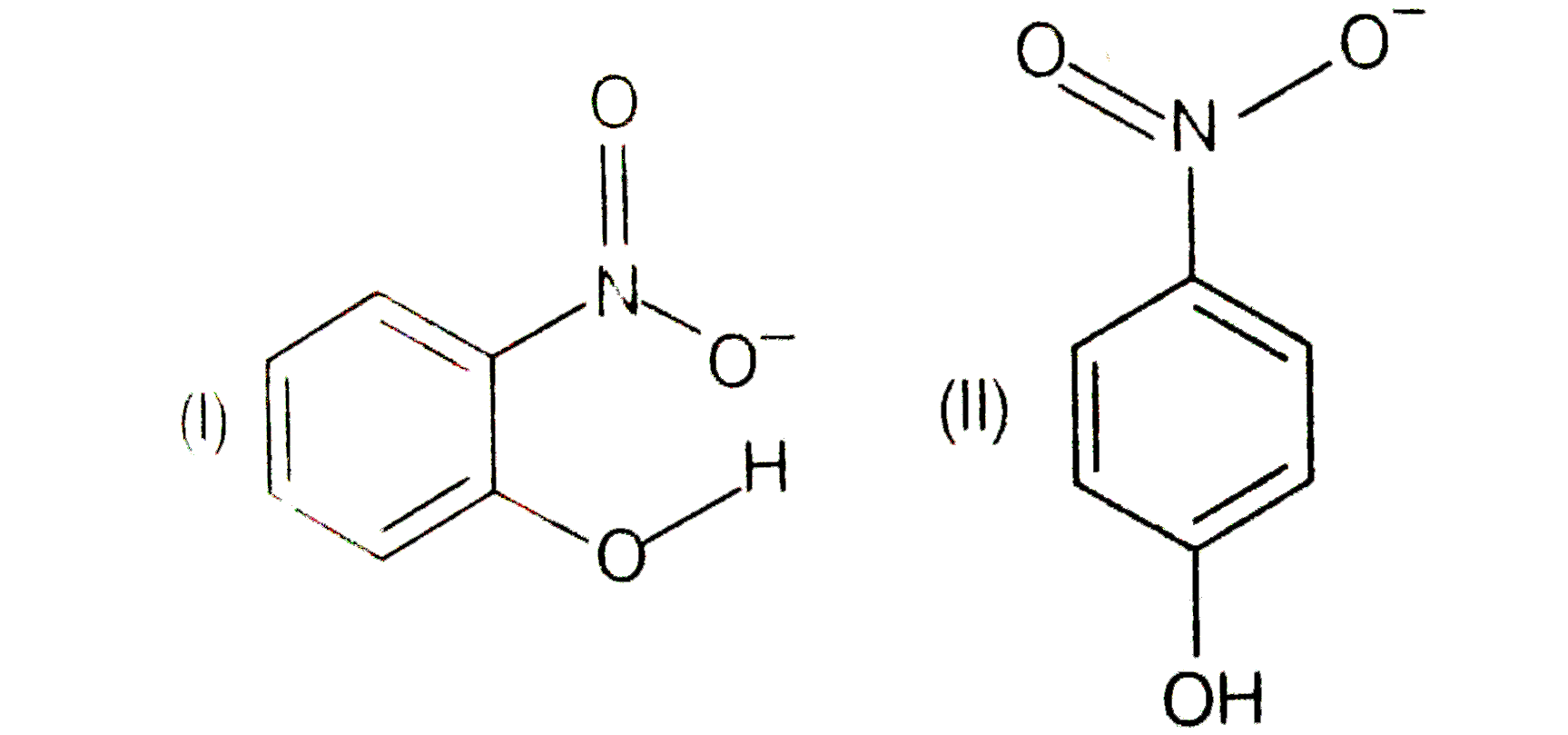Which among the following compounds will form intra - molecular hydrogen bond ?
Acetone
Nitroethane
2,4-pentanedione
Benzaldehyde
The correct Answer is:C
To determine which among the given compounds will form an intramolecular hydrogen bond, we need to analyze the structures of each compound and identify if there is a possibility for a hydrogen bond to form within the same molecule.
1. Understanding Intramolecular Hydrogen Bonding:
- An intramolecular hydrogen bond occurs when a hydrogen atom bonded to a highly electronegative atom (like oxygen or nitrogen) forms a bond with another electronegative atom within the same molecule.
2. Analyzing Each Compound:
- Acetone (CH3COCH3):
- Structure: It has a carbonyl group (C=O) flanked by two methyl groups.
- Analysis: There are no suitable hydrogen atoms that can form a bond with the oxygen in the carbonyl group. Thus, acetone cannot form an intramolecular hydrogen bond.
- Nitroethane (CH3CH2NO2):
- Structure: It contains a nitro group (-NO2) attached to an ethyl group.
- Analysis: The nitro group does not provide a suitable hydrogen atom that can form a bond with another electronegative atom within the same molecule. Therefore, nitroethane does not form an intramolecular hydrogen bond.
- 2,4-Pentanedione (CH3C(O)CH2C(O)CH3):
- Structure: This compound has two carbonyl groups (C=O) and can exist in an enolic form.
- Analysis: In the enolic form, one of the hydrogen atoms from the hydroxyl group (OH) can form a hydrogen bond with the nearby carbonyl oxygen (C=O). This results in a stable intramolecular hydrogen bond. Hence, 2,4-pentanedione can form an intramolecular hydrogen bond.
- Benzylidene (C6H5CH=O):
- Structure: This compound has a benzene ring attached to a carbonyl group.
- Analysis: There are no suitable hydrogen atoms that can form a bond with the carbonyl oxygen within the same molecule. Therefore, benzylidene does not form an intramolecular hydrogen bond.
3. Conclusion:
- Among the compounds analyzed, only 2,4-pentanedione forms an intramolecular hydrogen bond.
Final Answer:
2,4-Pentanedione is the compound that will form an intramolecular hydrogen bond.
- An intramolecular hydrogen bond occurs when a hydrogen atom bonded to a highly electronegative atom (like oxygen or nitrogen) forms a bond with another electronegative atom within the same molecule.
- Acetone (CH3COCH3):
- Structure: It has a carbonyl group (C=O) flanked by two methyl groups.
- Analysis: There are no suitable hydrogen atoms that can form a bond with the oxygen in the carbonyl group. Thus, acetone cannot form an intramolecular hydrogen bond.
- Structure: It contains a nitro group (-NO2) attached to an ethyl group.
- Analysis: The nitro group does not provide a suitable hydrogen atom that can form a bond with another electronegative atom within the same molecule. Therefore, nitroethane does not form an intramolecular hydrogen bond.
- Structure: This compound has two carbonyl groups (C=O) and can exist in an enolic form.
- Analysis: In the enolic form, one of the hydrogen atoms from the hydroxyl group (OH) can form a hydrogen bond with the nearby carbonyl oxygen (C=O). This results in a stable intramolecular hydrogen bond. Hence, 2,4-pentanedione can form an intramolecular hydrogen bond.
- Structure: This compound has a benzene ring attached to a carbonyl group.
- Analysis: There are no suitable hydrogen atoms that can form a bond with the carbonyl oxygen within the same molecule. Therefore, benzylidene does not form an intramolecular hydrogen bond.
- Among the compounds analyzed, only 2,4-pentanedione forms an intramolecular hydrogen bond.
2,4-Pentanedione is the compound that will form an intramolecular hydrogen bond.
Similar Questions
Knowledge Check
Which of the following statements is not true ? (a) Intermolecular hydrogen bonds are formed between two different molecules of compounds. (b)Intramolecular hydrogen bonds are formed between two different molecules of the same compounds. (c)Intramolecular hydrogen bonds are formed within the same molecule. (d) Hydrogen bonds have strong influence on the physical properties of a compound.
AIntermolecular hydrogen bonds are formed between two different molecules of compounds.BIntramolecular hydrogen bonds are formed between two different molecules of the same compounds.CIntramolecular hydrogen bonds are formed within the same molecule.DHydrogen bonds have strong influence on the physical properties of a compound.
Which one of the following compounds shows the presence of intramolecular hydrogen bond ?
View SolutionWhich one of the following compounds shows the presence of intramolecular hydrogen bond ?
View SolutionWhich of the following species will have intramolecular hydrogen bonding ?
View SolutionWhich one of the following compounds shows the presence of intramolecular hydrogen bond?
View SolutionStructures of molecules of two compounds are given below.

a) Which of the two compounds will have intermolecular hydrogen bonding and which compound is expected to show intramolecular hydrogen bonding?
b) The melting point of compound depends on, among other things, the extent of hydrogen bonding. On this basis explain which of the above two compounds will show higher melting point?
c) Solubility of compounds in water depends on powers to form hydrogen bonds with water. Which of the above compounds will form hydrogen bond with easily and be more stable in it?
View SolutionWhich of the following molecules shows intramolecular hydrogen bonding?
View SolutionWhich of the following species shows intramolecular hydrogen bonding ?
View Solution
